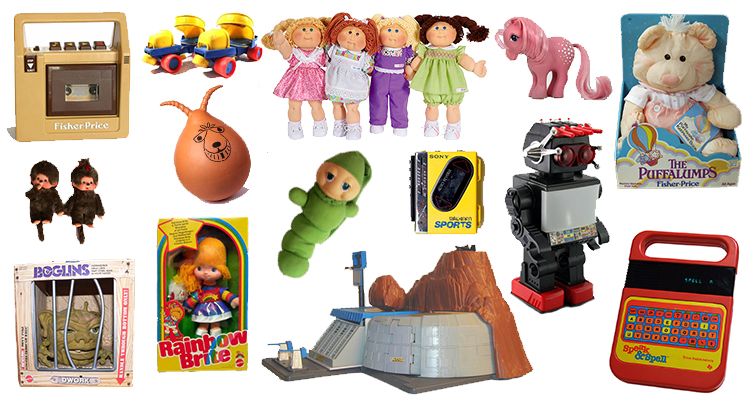Your childhood toy box might be worth more than your 401(k).
That mint-condition Optimus Prime gathering dust in your basement? It sold for $12,000. The He-Man figure you begged your parents for in 1985? Now worth up to $2,000 in original packaging.
Gen X parents are discovering an unexpected goldmine: their forgotten 80s toys. The global toy collectibles market hit $26.4 billion in 2024 and is projected to reach $48.9 billion by 2034. That’s not child’s play – it’s serious investment territory.
While traditional investors chase volatile stocks and overpriced real estate, savvy Gen Xers are turning plastic nostalgia into cold, hard cash. Collectible toys are increasingly viewed as investment assets, with some rare items appreciating significantly in value over time.
Here’s why your childhood memories might be the smartest investment move you’ll make in 2025.
The Numbers Don’t Lie: 80s Toys Are Crushing Traditional Investments
Forget the stock market’s 10% average annual return.
Vintage toys are delivering jaw-dropping results:
- Original Transformers figures from the ’80s can fetch thousands
• Daredevil Comic #168 (first Elektra appearance) sells for around £891 in mint condition
• Original Thundercats Thunderwings Lion-O: $6,000 – $7,000
• Original Samantha Parkington American Girl Doll: $4,200
Compare that to real estate’s typical 4%-8% annual gains.
The toy collectibles market is experiencing explosive growth. Total market for the segment is around $52 billion which includes overlap between toys and figurines industry.
And here’s the kicker: The toy collectibles market is expected to grow at a CAGR of 12.0% from 2024 to 2030.
That’s outpacing inflation, bonds, and most traditional investments.
Why Gen X Parents Have the Perfect Investment Edge
Gen X has a secret weapon: firsthand knowledge.
You lived through the golden age of toys. You know which action figures were rare. Which playsets everyone wanted but few could afford.
This insider knowledge is worth its weight in gold.
Consider these relics from our 80s childhood that are now investment goldmines. The toys nobody thought to save? They’re often the most valuable today.
30% of Gen Z start investing in early adulthood – compared to 9% of Gen X. But Gen X has something younger investors don’t: authentic memories of which toys mattered.
You remember standing in Toys “R” Us, dreaming about that G.I. Joe USS Flagg playset. The G.I. Joe Aircraft Carrier U.S.S. Flagg from 1985 can go for almost $6,000.
That emotional connection? It’s your investment superpower.
The Perfect Storm: Why 80s Toys Are Exploding in Value Now
Three factors are creating unprecedented demand:
1. Nostalgia Marketing Hits Peak Power
The appeal of nostalgia-driven marketing campaigns has led to a resurgence of interest in classic toy franchises from the 80s and 90s.
Netflix reboots. Movie remakes. Pop culture is mining the 80s harder than ever.
Every new Transformers movie sends vintage toy prices soaring.
2. Millennial Money Enters the Market
Millennials collectively have about $1.4 trillion burning holes in their pockets.
They’re not just buying – they’re competing with Gen X for the same toys.
Around 70% of millennials alone bought themselves a toy to fill the downtime in 2020.
3. Supply Keeps Shrinking
Unlike today’s mass-produced merchandise, many 80s toys were made in limited quantities.
Every year, more toys get damaged, lost, or thrown away.
The remaining mint-condition pieces become exponentially rarer.
The Investment Strategy That’s Making Gen X Parents Rich
Smart collectors follow a proven playbook:
Condition Is King
“Mint in Box” (MIB) or “Mint on Card” (MOC) toys often sell for exponentially higher prices than loose ones.
That beat-up He-Man? Worth $50.
Same figure, sealed in package? $500+.
Completeness Matters
Missing accessories? Forget it. An original He-Man is cool, but without his Power Sword, his value drops.
Every tiny weapon, every accessory, every instruction booklet adds value.
Know Your Niches
The most valuable toys aren’t always the most popular:
- Mail-order exclusives
• Store-specific variants
• International releases
• Production errors
These command premium prices from serious collectors.
Real Gen X Success Stories: From Toy Box to Bank Account
The evidence is everywhere.
Vintage Star Wars toys, especially from Kenner, are highly collectible. One collector recently sold a complete set for enough to fund a house down payment.
Original movie posters from popular ’80s movies like “Back to the Future,” “Ghostbusters,” or “The Breakfast Club” can be valuable collector’s items.
Even seemingly worthless toys surprise people.
My Buddy was a major inspiration for the design of the evil toy Chucky from the 1988 horror flick Child’s Play. That connection alone drives up value for collectors.
How 80s Toys Stack Up Against Traditional Alternative Investments
Let’s compare the numbers:
Real Estate:
• Average return: 4-8% annually
• High entry costs
• Ongoing maintenance
• Property taxes
Gold:
• 23% of surveyed respondents view gold as the best long-term investment
• Storage costs
• No passive income
• Subject to commodity volatility
80s Toys:
• Returns: Often 100%+ over 5-10 years
• Low entry point
• Minimal storage costs
• Growing market demand
The math is simple: vintage toys offer better returns with lower barriers to entry.
The Hidden Benefits Only Gen X Parents Understand
Beyond pure profit, toy investing offers unique advantages:
Family Bonding Opportunities
Teaching your kids about investments through toys they can touch and understand beats explaining index funds any day.
Plus, hunting for treasures at garage sales becomes a family adventure.
Emotional Hedging
Unlike stocks, your toy investments bring joy even if values dip.
That Castle Grayskull display? It’s art that happens to appreciate.
Social Currency
The tight-knit community of collectors, fueled by online forums, social media groups, and conventions, contributes to the growth of the toy collectibles market.
You’re not just investing – you’re joining a passionate community.
The Risks Nobody Talks About (And How to Avoid Them)
Let’s be real: not every toy is a goldmine.
Common pitfalls:
- Reproductions flooding the market
• Condition deterioration
• Market saturation for common items
• Authentication challenges
Smart protection strategies:
- Buy from reputable dealers
• Document everything
• Invest in proper storage
• Diversify across different toy lines
Your Action Plan: Start Building Your Toy Portfolio Today
Ready to turn nostalgia into net worth?
Here’s your roadmap:
Step 1: Audit Your Existing Collection
Check your parents’ attic. That basement box. The garage.
You might already be sitting on treasures.
Step 2: Research Current Values
Use eBay sold listings (not asking prices) to gauge real market values.
Join collector forums for insider knowledge.
Step 3: Start Small and Smart
Begin with toys you understand and remember.
Set a budget – treat it like any investment.
Step 4: Network and Learn
Join collector groups, attend events, and make friends in the community. Networking can lead to great deals and insider tips.
The Future Is Bright (And Profitable)
The 80s toy market shows no signs of slowing down. If anything, it’s heating up as younger generations discover the charm of retro collectibles.
With so many toys from the ’70s, ’80s and ’90s finding their way back on shelves, nostalgia is becoming a permanent market force.
The convergence of pop culture reboots, millennial buying power, and shrinking supply creates a perfect investment storm.
Gen X parents have a unique window of opportunity.
You understand these toys. You lived their golden age. You know their true value.
While others chase cryptocurrency bubbles or overpriced real estate, you can build wealth from the very toys that defined your childhood.
The question isn’t whether 80s toys are a good investment.
The question is: which toys will you invest in first?
Your inner child – and your portfolio – will thank you.





























